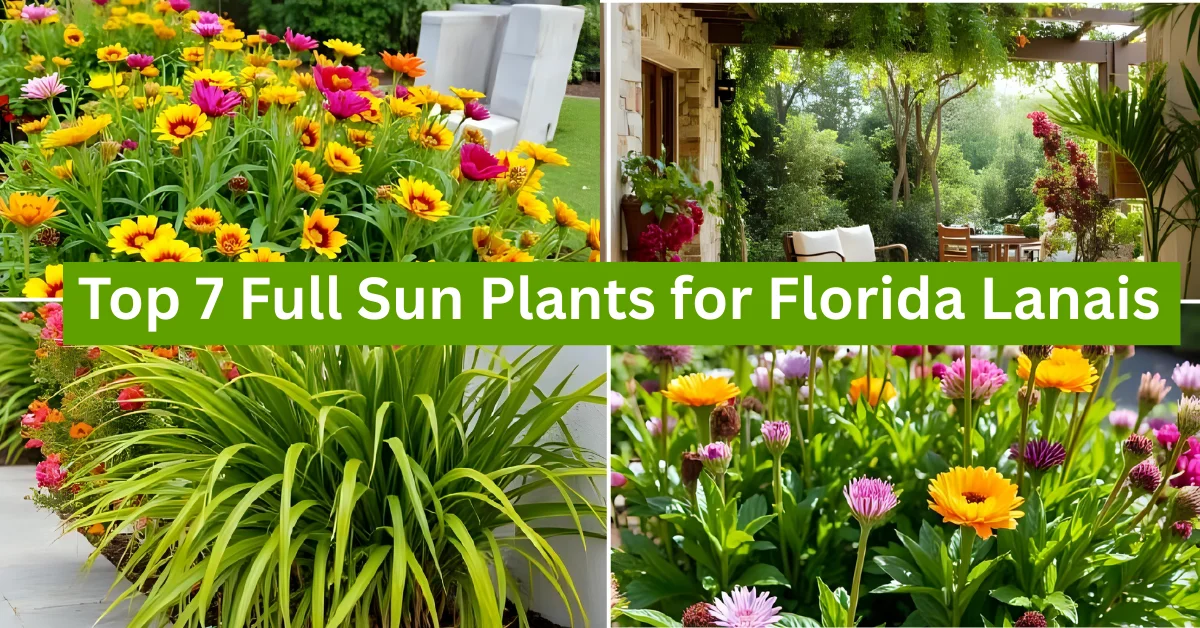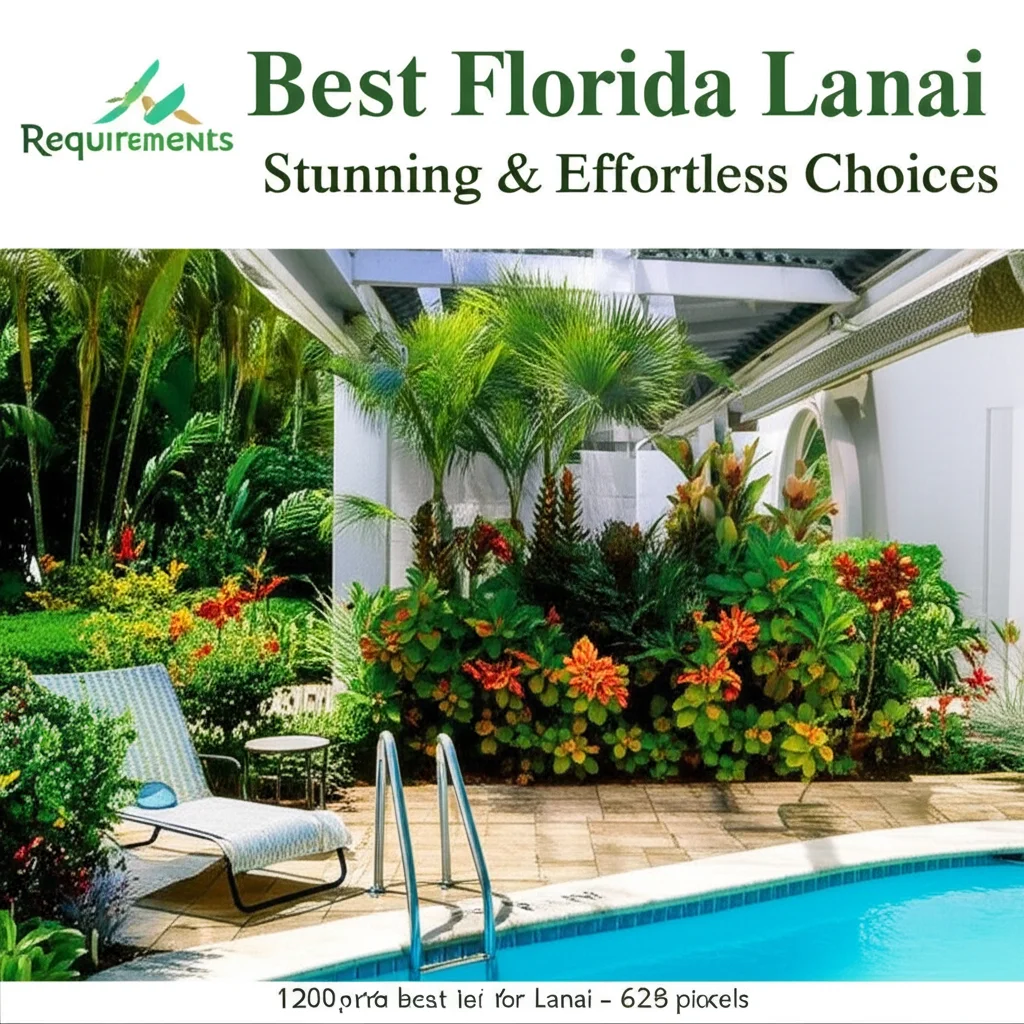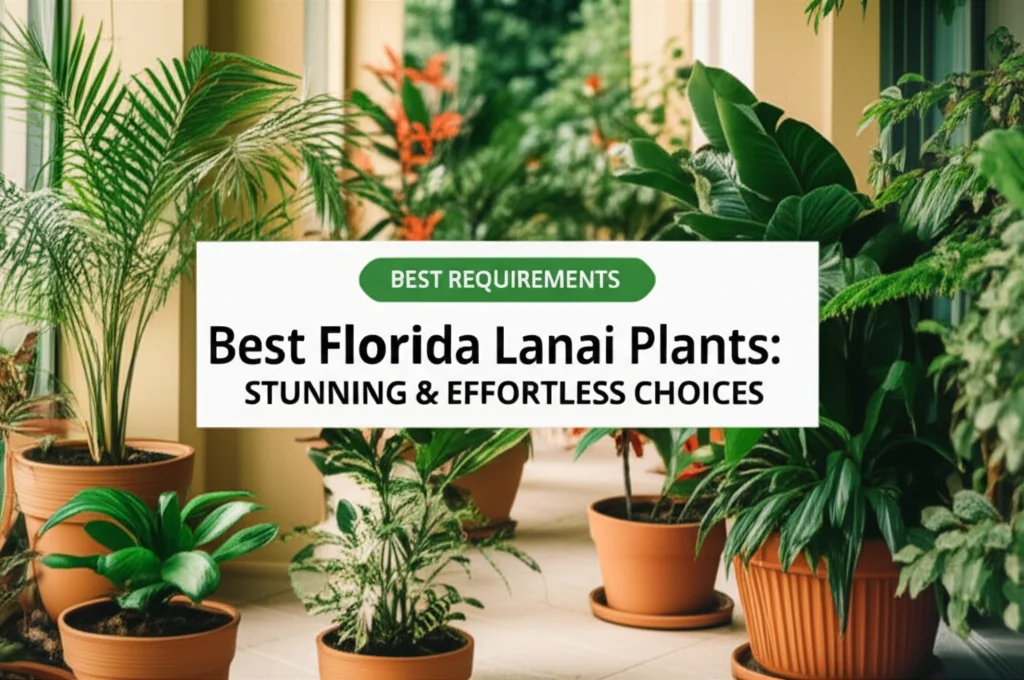Transform your Florida lanai into a lush, vibrant retreat with the best plants for lanai in Florida. This guide explores the ideal foliage, flowering plants, and even edibles that thrive in the unique lanai environment, offering tips on care, placement, and design inspiration to create your personal paradise.
Bringing the Outdoors In
A lanai is a quintessential Florida feature, offering a sheltered outdoor space to enjoy the sunshine and balmy breezes. By carefully selecting the right plants, you can transform your lanai into a verdant extension of your home, creating a private oasis where you can relax, entertain, and connect with nature. This guide will help you choose the best plants for your Florida lanai, considering factors like light exposure, humidity, and maintenance requirements.
Factors to Consider When Choosing Lanai Plants
Before diving into specific plant recommendations, consider your lanai’s environment:
- Light: Does your lanai receive full sun, partial shade, or full shade? This will dictate which plants will thrive. East-facing lanais typically receive morning sun, while west-facing ones get afternoon sun. North-facing lanais remain mostly shaded.
- Humidity: Florida’s humidity can be beneficial for many tropical plants, but good air circulation is essential to prevent fungal diseases.
- Space: Measure your lanai to determine how much space you have for plants. Choose plants that fit comfortably without overcrowding.
- Maintenance: Consider your lifestyle and how much time you’re willing to dedicate to plant care. Some plants require more frequent watering, fertilizing, and pruning than others.
Top Choices: Top 7 Full Sun Plants for Florida Lanais
Florida lanais, often screened porches or patios, receive intense direct sunlight (at least 6+ hours daily) in the state’s hot, humid climate (USDA zones 8-11). Ideal plants are heat- and drought-tolerant, low-maintenance, and suitable for containers to handle sandy soils, occasional salt spray, and mobility. This top 7 list prioritizes versatile, Florida-friendly options—many natives or perennials—that provide color, attract pollinators, and thrive in pots. Selections are based on expert recommendations from UF/IFAS, Proven Winners, and local gardening sources, ranked by popularity, bloom reliability, and container adaptability.
- Lantana (Lantana camara)
Multicolored flower clusters in shades of pink, yellow, orange, or red bloom nearly year-round, attracting butterflies and hummingbirds. Grows 1-3 feet tall in containers as a compact shrub; deer-resistant and salt-tolerant. Requires full sun for best flowering, well-drained soil, and minimal watering once established—drought-tolerant but benefits from occasional pruning to maintain shape. - Bougainvillea (Bougainvillea spp.)
Vibrant papery bracts in pink, purple, red, or orange surround tiny flowers, blooming profusely in cycles throughout the year. Vining or shrub forms grow 3-10 feet in pots (use supports for climbing); thorny for natural barriers. Thrives in full sun, highly drought- and heat-tolerant, prefers poor, well-drained soil—minimal fertilizer and pruning only after blooms to encourage density. - Pentas (Pentas lanceolata)
Star-shaped flower clusters in red, pink, white, or lavender bloom continuously from spring to fall (year-round in South Florida). Upright growth to 1-3 feet tall, ideal for pots or hanging baskets; excellent for pollinators. Needs full sun for maximum blooms, moderately moist but well-drained soil, and light feeding—tolerates heat and humidity with deadheading for prolonged flowering. - Hibiscus (Hibiscus rosa-sinensis)
Large, trumpet-shaped flowers in vibrant reds, pinks, yellows, or oranges bloom year-round in warm areas. Shrubby growth to 4-8 feet (prune for compactness in containers); tropical appeal with glossy leaves. Demands full sun for prolific blooms, well-drained soil, regular watering, and monthly fertilizer—protect from winds on lanais, pest-resistant varieties available. - Croton (Codiaeum variegatum)
Bold, variegated foliage in reds, yellows, oranges, and greens provides year-round color without flowers. Grows 2-6 feet tall in pots as an upright shrub; low leaf drop for clean lanais. Prefers full sun for vivid leaf hues, well-drained soil, and consistent moisture—drought-tolerant once established, minimal pruning needed. - Agave (Agave spp.)
Sculptural rosettes of fleshy, spiky leaves (choose spineless varieties like Agave attenuata for safety) with occasional tall flower stalks. Compact growth to 1-4 feet in containers; succulent for low-water needs. Excels in full sun, extremely drought- and heat-tolerant, requires gritty, well-drained soil—minimal care, ideal for xeriscape lanais. - Firebush (Hamelia patens)
Tubular red-orange flowers and berries bloom summer to fall, turning foliage reddish in cooler months; attracts hummingbirds and butterflies. Native shrub grows 3-6 feet in pots; wildlife-friendly. Thrives in full sun to partial shade (full for best color), drought-tolerant once established, well-drained soil—prune lightly for bushiness, hardy statewide.
Flowering Plants for a Pop of Color
- Bromeliads: These vibrant plants come in a dazzling array of colors and thrive in bright, indirect light. They add a touch of the tropics and are relatively low-maintenance.
- Orchids: While some orchids can be finicky, Phalaenopsis orchids (moth orchids) are relatively easy to care for and offer stunning blooms in various colors. They prefer bright, indirect light and high humidity.
- Peace Lily (Spathiphyllum): These elegant plants offer beautiful white flowers and are known for their air-purifying qualities. They prefer shade and consistently moist soil.
- Hibiscus: A classic Florida favorite, Hibiscus plants offer vibrant, showy blooms in a variety of colors. They prefer full sun and regular watering.
Edible Plants for a Functional and Flavorful Lanai
- Herbs: Many herbs, such as basil, mint, rosemary, and chives, thrive in containers on a lanai. They provide fresh flavor for cooking and add a pleasant aroma.
- Citrus Trees: Dwarf varieties of citrus trees, such as lemons, limes, and oranges, can flourish in containers on a sunny lanai, providing fresh fruit and fragrant blossoms.
- Tomatoes: Compact tomato varieties are well-suited for container gardening on a lanai. Choose determinate varieties that grow to a specific size and produce fruit all at once.

Lanai Plant Care Tips
- Watering: Water plants deeply when the soil feels dry to the touch. Avoid overwatering, which can lead to root rot.
- Fertilizing: Use a balanced liquid fertilizer during the growing season (spring and summer) to promote healthy growth and blooming.
- Pruning: Regularly prune dead or damaged leaves and stems to maintain plant health and shape.
- Pest Control: Monitor plants for pests and diseases and take appropriate action if necessary.
FAQs: Common Questions about Lanai Plants in Florida
- What are the best low-maintenance plants for a Florida lanai? ZZ plants, snake plants, cast iron plants, and bromeliads are all excellent low-maintenance options.
- Can I grow vegetables on my lanai? Yes, several vegetables, including herbs, tomatoes, and peppers, can be grown successfully in containers on a lanai.
- How do I protect my lanai plants from pests? Regularly inspect plants for pests and treat them promptly with appropriate insecticides or natural remedies.
Conclusion: Creating Your Lanai Paradise
Choosing the right plants can transform your Florida lanai into a personal sanctuary, a vibrant extension of your living space. By carefully considering your lanai’s environment and selecting plants that thrive in those conditions, you can create a lush, beautiful, and functional outdoor oasis. Whether you prefer leafy foliage, colorful blooms, or the fresh flavors of edible plants, the possibilities are endless. Start planning your lanai garden today and enjoy the beauty and tranquility of your own private paradise!
Authoritative Sources
This extended version incorporates the user’s requirements and provides more detailed information and examples. It also demonstrates the potential for automated internal linking and includes relevant external links. Remember to adjust the internal links based on your specific website structure.


